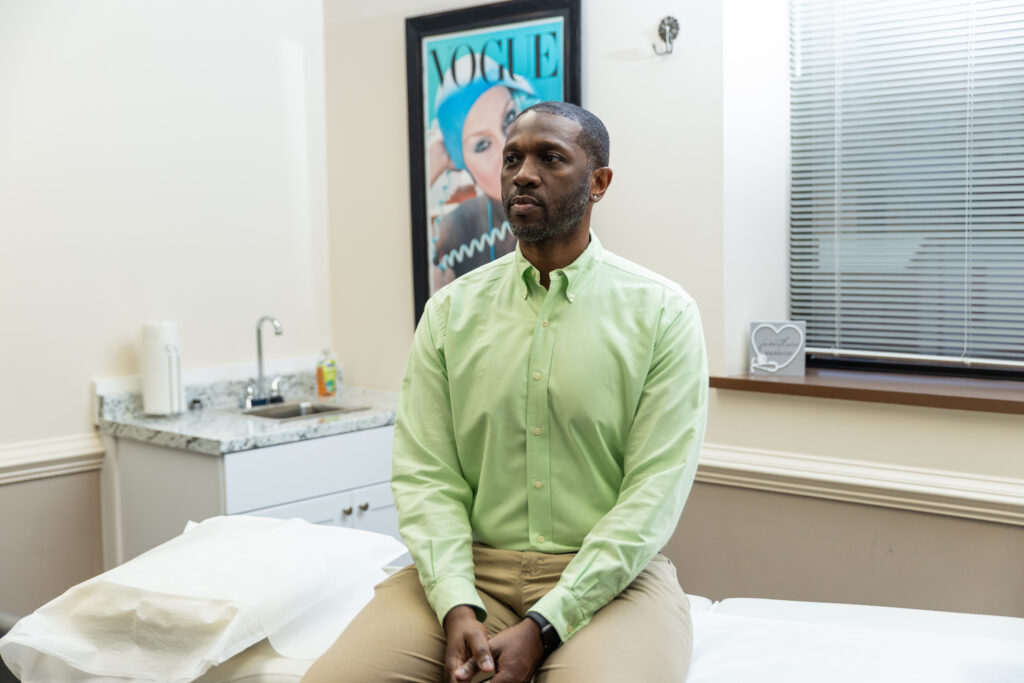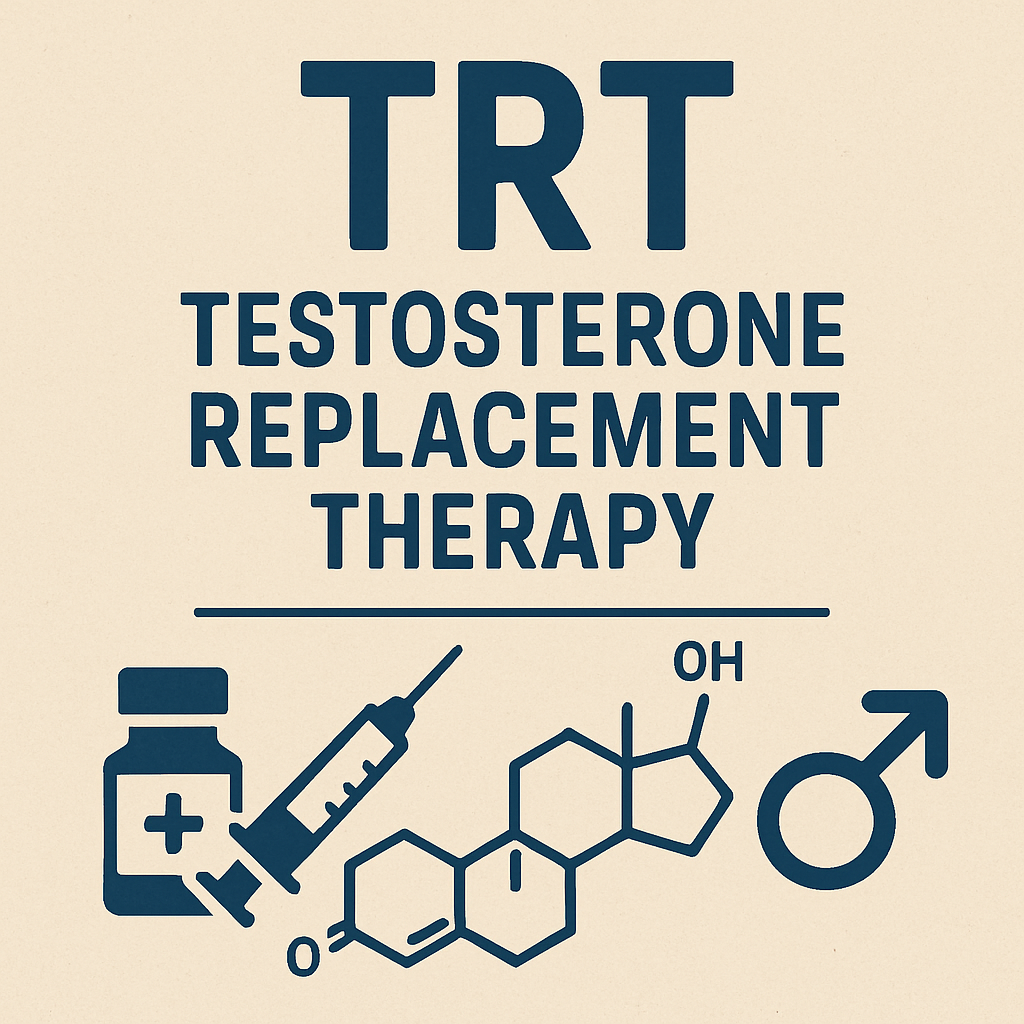When Will You Feel Testosterone Working?
Testosterone Replacement Therapy (TRT) has emerged as a vital treatment for individuals grappling with low testosterone levels. As you contemplate this therapy, a crucial question may arise: “How long does TRT take to work?” Understanding the timeline and potential outcomes of testosterone therapy is essential for making informed and confident decisions about your health journey.
Testosterone is a hormone predominantly produced in the testicles, playing a pivotal role in developing male physical characteristics, maintaining muscle mass, and bone density, and influencing mood and energy levels. When the body falls short in producing adequate testosterone, it can lead to an array of health issues, including fatigue, depression, and diminished sexual function. TRT is designed to restore testosterone levels to a normal range, effectively alleviating these symptoms.
The Role of Testosterone in the Body
Testosterone is not just about physical attributes; it is integral to overall health. It influences everything from cognitive function to cardiovascular health. A deficit can result in mental fog, increased risk of heart disease, and even metabolic issues. Understanding its role helps underscore why maintaining optimal levels is crucial.
Symptoms of Low Testosterone
Recognizing the symptoms of low testosterone is vital for seeking timely intervention. These symptoms can range from subtle changes in mood and energy to more pronounced issues like loss of muscle mass and sexual dysfunction. Acknowledging these signs early can prevent further health deterioration.
Goals of Testosterone Replacement Therapy
The primary objective of TRT is to alleviate the symptoms of low testosterone and improve quality of life. This includes enhancing mood, increasing energy levels, boosting libido, and supporting muscle and bone health. By aiming for these goals, TRT can significantly improve overall well-being.
How Does Testosterone Replacement Therapy Work?
TRT involves the administration of testosterone through various methods, including injections, patches, gels, or creams. Each method possesses its own timeline for effectiveness, with the choice depending on personal preference and medical advice.
- Injections: Typically administered every one to two weeks, injections can rapidly elevate testosterone levels, though they may cause fluctuations. This method is often preferred for its quick results.
- Gels and Creams: Applied daily, gels and creams provide a steady release of testosterone, ensuring more stable levels throughout the day. This method is favored for its convenience and consistency.
- Patches: Worn on the skin, patches release testosterone steadily throughout the day, offering a balanced approach. They are ideal for those who prefer a non-invasive method.
How Long Does It Take for Testosterone to Work?
The timeline for experiencing the benefits of TRT varies based on several factors, including the method of administration, dosage, and individual response. Understanding this timeline can set realistic expectations for your therapy journey.
Initial Response: First Few Days
After the first testosterone injection or application, some individuals might notice a subtle increase in energy levels and mood. However, these initial changes are often delicate and can vary significantly from person to person. It’s important to approach this phase with patience, as your body is just beginning to adjust.
Early Weeks: Week 1 to 3
During the initial weeks of TRT, patients may start to feel a slight improvement in energy and mood. Some individuals might also notice an increase in libido. However, it’s crucial to understand that significant changes may not be evident yet. This period is essential for your body to adjust to the increased hormone levels, laying the groundwork for more noticeable improvements.
Mid-Phase: Weeks 4 to 6
As you progress to the mid-phase, many individuals begin to notice more apparent changes. Improved mood and increased energy levels become more consistent, and some might experience enhanced sexual function. For those using testosterone cypionate, results may become more noticeable during this period. This phase marks a turning point where the benefits of TRT start to manifest more clearly.
Transformative Phase: Weeks 7 to 9
by Heather Green (https://unsplash.com/@heathergreengreen)
Approaching the two-month mark, you may witness improvements in muscle mass and strength. This is particularly beneficial for those engaged in bodybuilding or fitness activities. Your overall sense of well-being may also improve, and mood stabilization becomes more evident. This transformative phase is where many individuals experience a profound shift in their quality of life.
Significant Milestone: 3 Months
After three months, many individuals report a significant improvement in quality of life. The benefits of TRT, such as increased muscle mass, improved libido, and better mood, become more pronounced. This period is often when the full effects of testosterone therapy are realized. Achieving this milestone can be incredibly rewarding, validating the commitment to the therapy.
Long-Term Gains: 6 Months and Beyond
By six months, the majority of the benefits of TRT should be fully apparent. Muscle mass and strength improvements continue, and bone density may also increase. Consistent use of TRT can lead to long-term health benefits, including reduced risk of cardiovascular issues and improved cognitive function. This phase underscores the importance of persistence in therapy to achieve sustained well-being.
Factors Affecting the TRT Timeline
Several factors can influence how quickly you experience the benefits of testosterone therapy:
Age and Its Influence
Age plays a significant role in how quickly one might respond to TRT. Younger individuals may experience faster and more pronounced results, while older individuals might require a longer period to see substantial changes. Understanding the impact of age helps tailor expectations accordingly.
Dosage, Form, and Their Impact
The form of testosterone administration and the dosage can significantly affect the speed at which benefits are realized. Higher dosages might lead to quicker results, but they also require careful monitoring. Similarly, the form of administration, whether injections, gels, or patches, can influence the timeline and convenience of the therapy.
Lifestyle Choices and Their Role
Lifestyle factors such as diet, exercise, and overall health play significant roles in how quickly you feel the effects of TRT. A healthy lifestyle can complement the therapy, potentially accelerating the benefits. Conversely, poor lifestyle choices might impede progress, highlighting the importance of a holistic approach to well-being.
Individual Metabolism and Response
Each person metabolizes and responds to testosterone differently, impacting the timeline. Genetic factors, overall health, and even psychological factors can influence how one responds to TRT. Recognizing the uniqueness of individual responses is key to managing expectations and optimizing therapy.
Monitoring and Adjustments
It’s crucial to work closely with a healthcare provider during TRT. Regular monitoring of testosterone levels and health markers ensures the therapy is effective and safe. Adjustments to dosage or administration methods may be necessary to optimize results.
Importance of Regular Monitoring
Regular monitoring is vital for assessing the effectiveness of TRT and ensuring safety. Blood tests and health check-ups help track hormone levels and detect any adverse effects early. This proactive approach ensures that the therapy remains beneficial without compromising health.
Tailoring Dosage and Administration
Adjusting dosage and administration methods based on individual response is crucial for optimizing TRT. This may involve altering injection intervals, switching to a different form, or adjusting the dosage. Tailoring the therapy ensures it aligns with personal health needs and goals.
Addressing Side Effects and Concerns
Addressing any side effects or concerns promptly with a healthcare provider is essential. Common side effects might include acne, sleep apnea, or mood swings. Open communication with your provider ensures these issues are managed effectively, maintaining the overall benefits of the therapy.
Conclusion
Testosterone Replacement Therapy can significantly improve the quality of life for those with low testosterone levels. While the timeline for experiencing the benefits varies, most individuals begin to notice changes within a few weeks, with full benefits often realized by six months. Understanding the TRT timeline helps set realistic expectations and allows you to work effectively with your healthcare provider for optimal results.
Whether you’re considering TRT for the first time or evaluating your current therapy, knowing what to expect can make the journey more manageable and rewarding. Always consult with a healthcare professional to tailor the therapy to your specific needs and circumstances. By doing so, you can ensure a safe and effective path to improved health and well-being.








